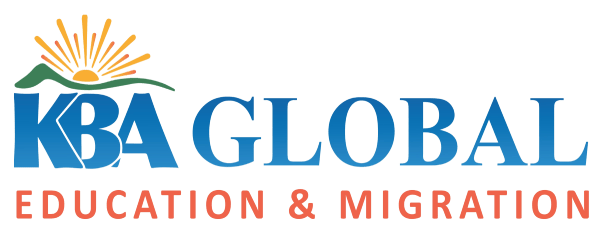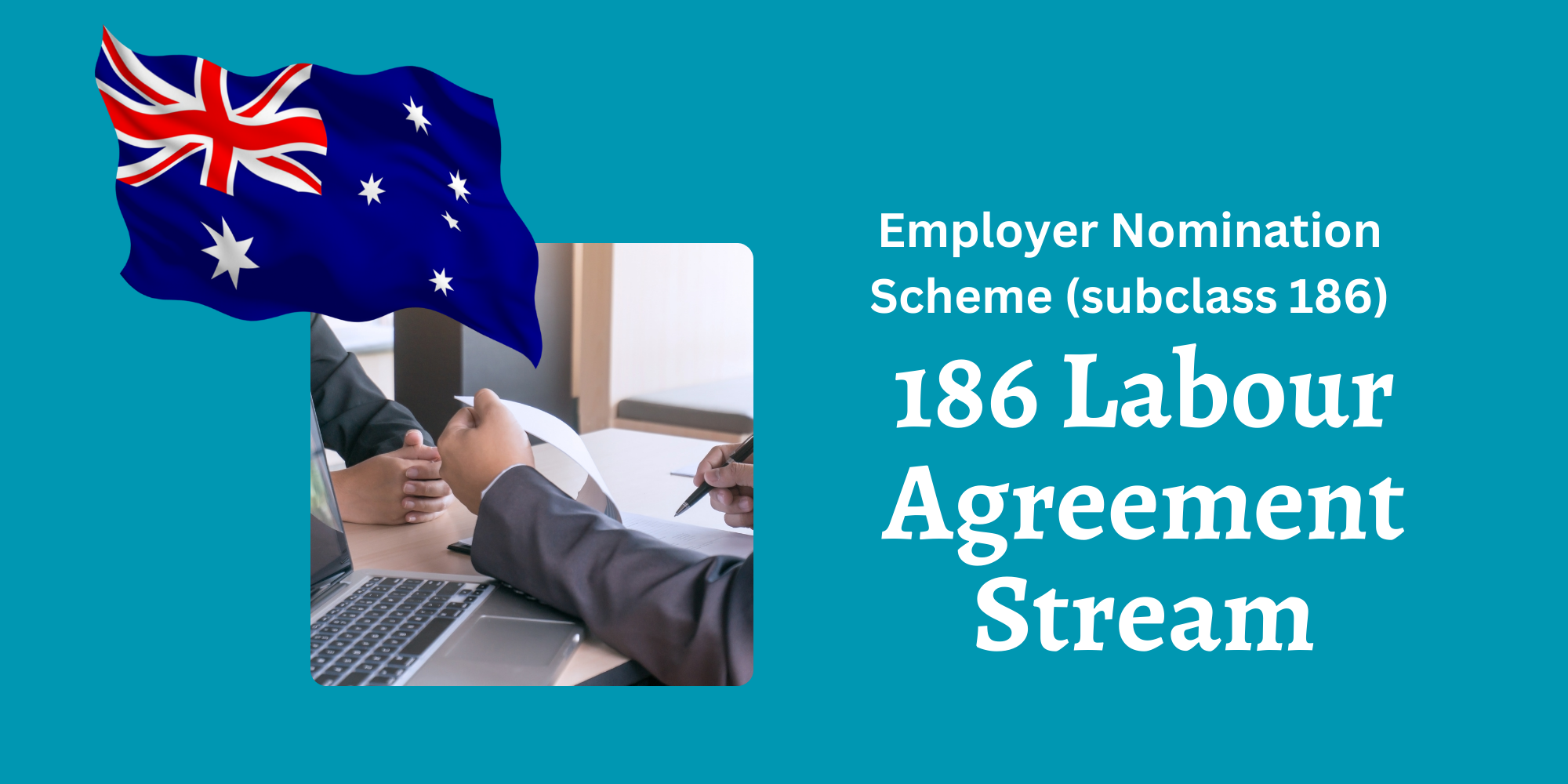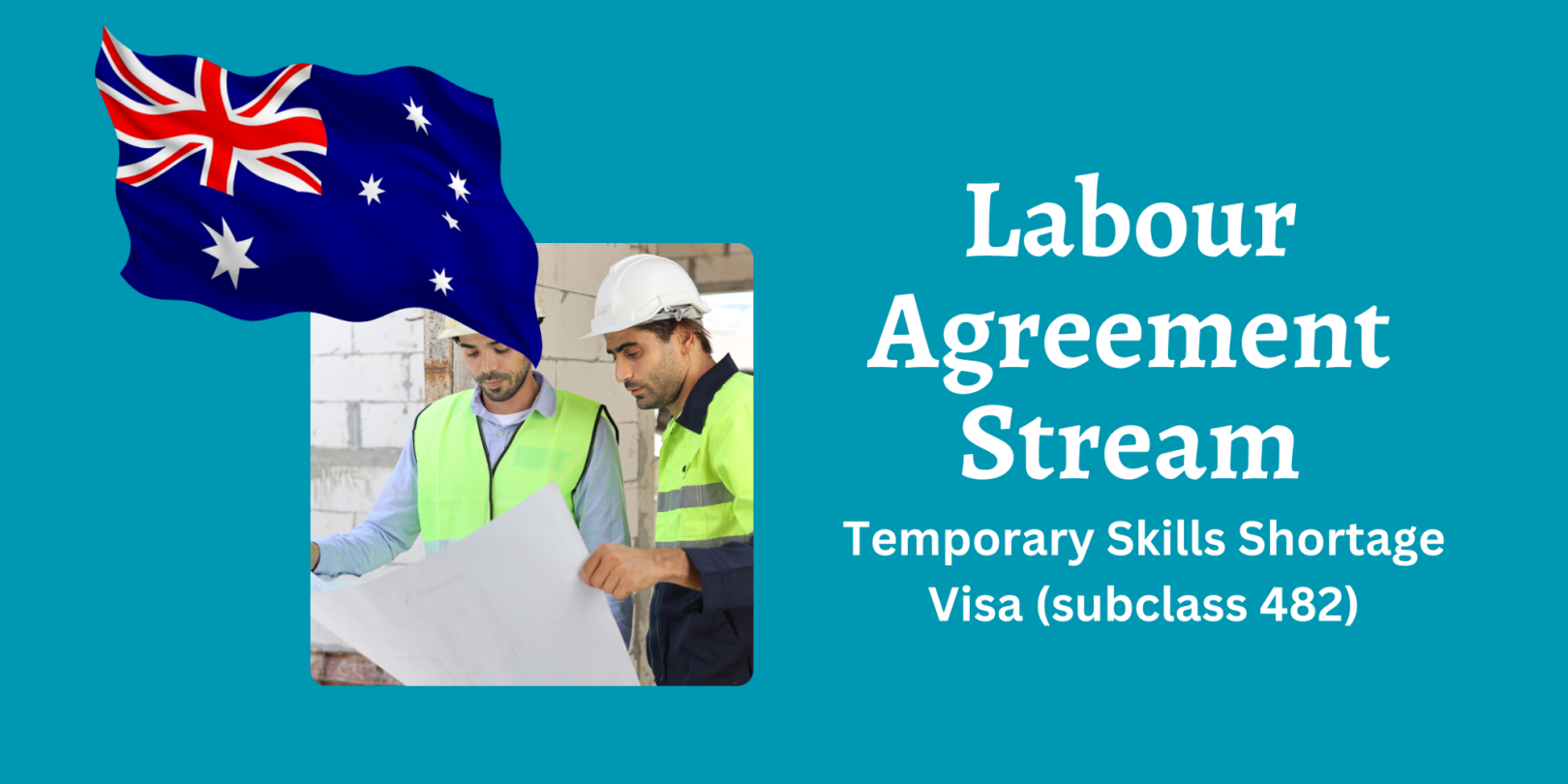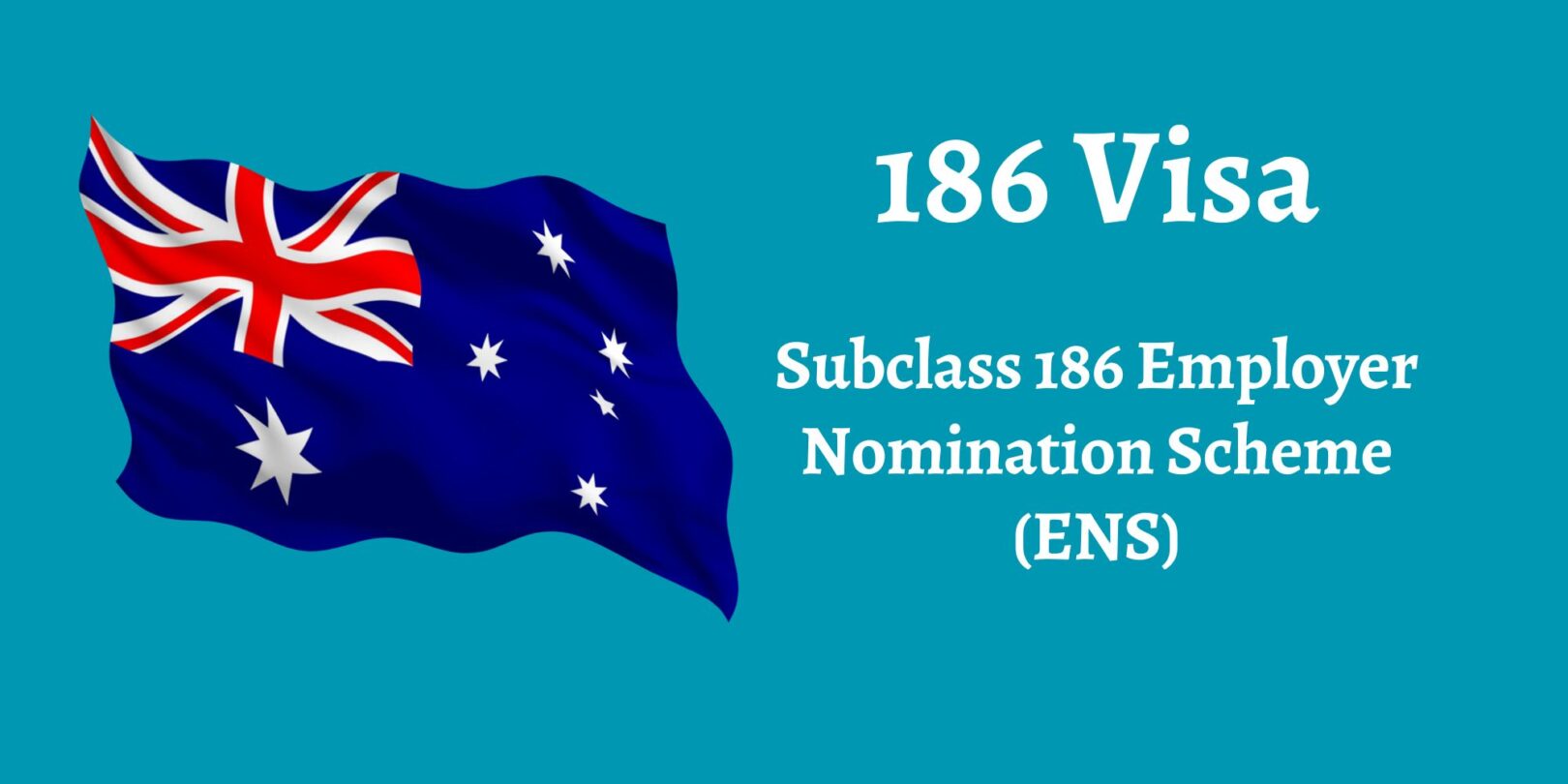If you’re struggling to fill a highly specialised role with local Australian candidates (despite robust recruitment), the 186 Labour Agreement Stream Visa could be the key to your hiring challenges.
This visa offers skilled overseas workers an attractive path to permanent residency. Moreover, it lets you customise work terms and conditions to suit your specific needs – something you can’t do with standard 186 visa programs.
Read on to learn more about the 186 Labour Agreement Stream, including the sponsorship process, eligibility requirements and answers to your frequently asked question.
What is the Subclass 186 Labour Agreement Stream?
The Employer Nomination Scheme (Subclass 186) Visa Labour agreement stream is designed for Australian employers who face local skills shortages and turn to overseas talent to fill the role.
Put differently, this visa stream is for cases where, despite significant efforts, you can’t find Australians with the skills or expertise you require.
If you’ve read our previous blog post on the 482 visa labour agreement stream, you might wonder, ‘How is the labour agreement stream of the 186 Visa different?’
The key difference is this: the 486 visa is a temporary visa, while the 186 visa offers a direct path to permanent residency.
For you as the employer, this option helps ensure you lock in the top experts you find. This also helps you with employee retention and stability as workers are more likely to stay long-term.
On the other hand, overseas workers would find this path to permanent residency very appealing, considering the quality of life and work opportunities in Australia.
It’s a win-win for each party involved in the agreement.
What can employers do on a 186 Visa Labour Agreement?
A labour agreement under the 186 visa allows you to:
- Offer permanent residency sponsorship to invite and secure highly skilled overseas workers
- Sponsor multiple overseas skilled workers
- Negotiate and tailor typical work arrangements and visa requirements to streamline the hiring process
- Ensure workforce stability for your business
- Recruit for roles not listed on the standard Skilled Occupation List
Employer Sponsorship Process: 186 Labour Agreement Visa
Sponsoring overseas workers through the Visa 186 Labour Agreement pathway is a three-stage process:
1. Requesting a Labour Agreement
To start off, you must first request a labour agreement.
In this process, you will work with Australian Government authorities, as well as other employers or industry groups, to agree on the specific terms of the labour agreement.
Assessing authorities will meticulously review your labour agreement request, ensuring that your business can truly hold up its end of the arrangement. Expect frequent communication and information requests as the Department verifies your credibility.
That said, this phase can take up to 6 months – the longest of the three stages.
You can seek the help of a migration agent to help you determine which of the existing labour agreements fits your needs. These types of labour agreements are as follows:
| Industry Labour Agreements | Designed for specific industries with fixed terms and conditions. Current labour agreements include: Advertising industryAged Care industryDairy industryFishing industryHorticulture industryMeat industryMinister of ReligionOn-hirePork IndustryRestaurant (premium dining) industry |
| Designated Area Migration Agreements (DAMA) | Designed for employers in regional Australia who are facing local skills shortages. Existing DAMAs include: Adelaide City Technology and Innovation Advancement, SAEast Kimberley, WAFar North Queensland, QLDGoulburn Valley, VICGreat South Coast, VICNorthern Territory, NTOrana, NSWPilbara, WASouth Australia Regional, SASouth West, WAThe Goldfields, WATownsville, QLDWestern Australia |
| Project Agreements | Designed to address skill shortages during construction of large-scale infrastructure or resource projects |
| Company-Specific Labour Agreements | Designed for employers who need workers with company-specific, niche skills that no Australian can meet. This only applies if the role/skill: is not already covered by an existing Industry Labour Agreement, DAMA or project agreement is not already included in the Skilled Occupation List, which applies to standard skilled visa programmes |

2. Nominating a Worker
Once your Labour Agreement is approved, the next step is to nominate the overseas worker.
Lodge your nomination application online through your ImmiAccount.
(You must first create an ImmiAccount for you to lodge a nomination.)
The online system will lead you through a series of questions where you’ll need to provide truthful and accurate information. It will also detail the specific paperwork you need to upload as supporting documents.
These documents generally include details of the labour agreement and nominated position, as well as the nominee’s credentials.
3. Assisting With the Worker’s Visa Application
After you’ve nominated a worker, they’ll need to apply for their 186 visa.
The worker must submit their application online via their own ImmiAccount, providing all required documents to show they meet all criteria set out in the labour agreement.
Throughout their application process, you must keep in close contact with your worker, as they may need information from you.
To streamline the entire three-stage process, the Department allows you to complete your nomination at the same time your worker applies for their 186 visa.
Processing times can range from 38 days to 3 months.
Employer Requirements for the 186 Visa Labour Agreement Stream
Eligibility Requirements
To be able to sponsor overseas workers under the visa 186 Labour Agreement Stream, Australian employers must meet the following general criteria:
- You must be part of a labour agreement.
- You must show proof that you have a genuine need for overseas workers after efforts of recruiting from the Australian workforce.
- You must be actively and lawfully operating in Australia.
- You must not have any records of breaching immigration policies, workplace relations laws and other Australian laws.
- You must meet all employer criteria specific to the labour agreement you are a part of.
Required Documents
Generally, you must present the following supporting documents:
- Business activities, such as business registration, licenses to operate, tax returns and so on
- Labour market testing
- Local recruitment evidence, such as job advertisements, recruitment records, correspondence with local candidates, etc.
- Details of the nominated position (e.g. job title, description, etc.)
- Annual market salary rate for the position
- Employment contract of the nominee
- Employment terms and conditions
- Other documents specified in the labour agreement you are a part of

Additional Information for 186 Visa Employers
Here are answers to some of the most frequently asked questions our past clients have about the 186 Labour Agreement Visa.
How much does it cost to sponsor a worker under the 186 Labour Agreement Stream?
Considering nomination fees, the Skilling Australians Fund (SAF) Levy and the worker’s visa application fee, you can expect to pay around AUD 8,310.
Below is a breakdown of the fees:
- Nomination fee: AUD 540 *
- SAF: AUD 3,000 (AUD 5,000 for big businesses with an annual turnover of AUD 10 million or more)
- Worker’s visa application fee: AUD 4,770 **
*You are exempt from the nomination cost if the position is located in regional Australia.
**It is not mandatory to pay for your worker’s visa application fee, although many employers do so to entice workers to apply.
Note that the breakdown above does not include other associated fees, such as legal fees, logistical fees, record-keeping fees and so on.
How long does it take for my employee’s 186 visa to be granted?
In a worst-case scenario, the process could take between 6 to 9 months.
The labour agreement request itself may take 3 to 6 months, while the nomination and visa approval typically take 1 to 3 months.
Keep in mind that processing times can vary. To avoid delays, ensure your application and supporting documents are complete and accurate.
What are the different streams of the 186 Employer Nomination Scheme visa?
The 186 visa has three streams:
- Direct Entry Stream: This is for skilled workers with qualifications and work experience aligned with an occupation listed in the standard Skilled Occupation List.
- Temporary Residence Transition Stream: This applies to workers currently on a 482 (TSS) visa (regardless of the stream). To be eligible, they must have worked full-time for the same employer/sponsor for at least 2 years.
- Labour Agreement Stream: This is for overseas workers whose skills are needed by Australian employers who are party to a Labour Agreement. These workers will work under tailored agreements that fit the specific needs of the employer and the industry.
How long does a labour agreement last?
Generally speaking, a labour agreement lasts for about five years. This means you will have to request a new labour agreement to be able to continue hiring overseas workers under that agreement.
Can my employee transition from a visa 482 labour agreement to a 186 visa?
Yes, they can. If your employee is currently on a 482 or TSS visa and you want to sponsor them for permanent residency, you can do so through the 186 visa Temporary Residence Transition (TRT) stream.
This stream lets your worker transition to PR while continuing to work for you under the same conditions as their TSS visa.
To be eligible, the employee must have worked full-time for you for at least 2 years.
Can a worker change employers after getting their 186 visa?
Workers are obliged to work full-time for their sponsoring employers for at least 2 years. After which, they will have full freedom to change employers.
Leaving before this period may lead to visa cancellation.
How much should I pay my sponsored worker?
You must pay your employee either the minimum salary requirement or the annual market salary rate (AMSR) for the nominated occupation, whichever is higher.
As of July 2024, the minimum salary requirement is AUD 73,150 (excluding any non-monetary benefits).
Also, you must ensure that the terms and conditions of employment for your overseas worker (including salary or pay) are no less favorable than those provided to Australian workers performing equivalent work.
What are the eligibility requirements for applicants of the Visa 186 Labour Agreement Stream?
The eligibility criteria can vary depending on the exact details outlined in the labour agreement you are party to. Unless otherwise specified in the labour agreement, 186 visa applicants must generally meet the criteria below:
- They must work solely for their nominating employer.
- They must possess the required level English skills.
- They must have at least 3 years of relevant work experience in the nominated occupation.
- They must have a positive skills assessment in the nominated occupation.
- They must have a work license or registration from a professional body (if applicable).
- They must be under 45 years of age.
- They must have previously held a 457 or 482 (TSS) visa issued under a labour agreement (if they are currently in Australia).
- They must meet Australia’s health and character requirements.
We guarantee end-to-end assistance for your 186 labour agreement application
KBA Global has 10+ years of experience handling visa applications in behalf of Australian employers and overseas visa applicants. To give you the best chances of visa success, we will:
- Evaluate your eligibility for a labour agreement and ensure you meet criteria
- Prepare and submit all necessary documents for both employer nomination and worker visa application
- Provide ongoing support to help you stay compliant with your sponsorship obligations
- Liaise between you and the Department of Home Affairs
- Closely guide sponsored employees throughout their visa applications
Book a free call today and speak directly with one of our migration agents!
Disclaimer: The above information is a general guide and not professional immigration advice. Be aware that immigration laws and regulations can change swiftly, potentially rendering some or all of the information outdated. Thus, before using the information above, we recommend checking the current laws through assistance from a migration agent or the Department of Home Affairs website.
Related Visas



